Why Luxury Brands Need a Distinct Voice in 2025
Luxury is about more than your product; it’s about the feeling. It’s the tone, the elegance, the intentional silence between the words. And in 2025, with markets evolving and audiences expanding, the way luxury brands speak has never mattered more.
Because let’s be honest, everyone wants a piece of the luxury pie now. The line between premium and mass market is blurring fast, and yet true luxury brands still need to feel untouchable. That’s the paradox.
You’re expected to connect, be present, be relevant… but never common.
This is where brand voice becomes everything. Not just how you speak, but how you hold yourself. It’s the difference between being perceived as timeless or just trendy, and between being followed or truly desired.
The challenge is crafting a luxury brand voice that feels both human and elevated. One that whispers exclusivity while still making just the right people feel like they’ve been personally invited.
And in a world driven by content, AI, and hyper-speed marketing, maintaining that refined, unmistakable tone is no easy task. But for luxury brands, it’s absolutely non-negotiable.
Because luxury without a distinct voice? It’s just expensive stuff.
The Evolution of Luxury Consumer Expectations
You already know your audience has changed. They’re younger, sharper, and more digitally native than ever before, but still expect the same emotional payoff luxury has always promised: status, quality, belonging… and just a touch of mystery.
But here’s the shift: they’re not buying into the old rules anymore.
Today’s luxury consumer doesn’t want to be spoken at. They want to feel seen, understood, and talked to in a way that feels intentional, not templated. They expect brands to stand for something, to communicate with clarity, to mean what they say. And to say it beautifully.
So, what does that actually mean for you and your luxury marketing strategy?
- Exclusivity still matters, but performative elitism doesn’t. Your voice should feel elevated, not arrogant.
- Luxury is now experience-led, not just product-led. Customers want to feel something when they engage with your brand, whether that’s online, in-store, or through a single sentence on your website. Your voice sets the tone for that emotional journey.
- Global doesn’t mean generic. Just because your brand reaches more people doesn’t mean you need to flatten your tone.
- Heritage needs a modern lens. Consumers care where you’ve come from, but they care more about how that legacy is expressed today. Your voice is how you bring that.
And perhaps the biggest shift?
They can spot inauthenticity instantly. Anything that feels overly polished, overly corporate, or overly AI… gets dismissed fast.
So if your tone sounds like every other “luxury lifestyle brand” out there, you’re not blending in; you’re disappearing.
Luxury consumers want to feel like they’re part of something truly considered. Your voice is the bridge between the brand you’ve built and the people who want to believe in it.
What Is Brand Voice?
Let’s strip it back for a second. Brand voice for high-end brands is not simply the tone you use. It’s not just formal vs. casual or serif vs. sans-serif.
It’s how your brand sounds, feels, and carries itself, everywhere. We’re talking in your emails, on your packaging, on a billboard, on Instagram, on the tag inside your garments… the list goes on!
It’s your personality, made tangible through words. And for luxury brands, that personality needs to do something very specific:
It needs to command attention quietly.
It needs to invite, without chasing.
It needs to sound like no one else, but never shout about it.
A clear brand voice gives your business a point of view. It ensures that no matter who’s writing for you, whether it’s an intern, CMO, social team, or agency, it always feels like you. This is why your brand voice guidelines are so vital, as they ensure everyone adapts your brand’s tone when communicating.
Because in luxury, the smallest cues say the most. A single phrase can signal heritage. A word choice can define status. Even a well-placed pause can say, we’re not like the rest.
Without a defined voice, even the most beautiful visuals can fall flat.
Why a Distinct Brand Voice Is Essential for Luxury Brands
One word: Clarity.
If your brand voice isn’t clearly defined, your audience will fill in the blanks for you. And when they’re doing the storytelling, you’re no longer in control of the narrative. For luxury brands, this isn’t a small risk. It’s a direct threat to your high-end brand positioning.
Here’s why your voice needs to be unmistakably your own.
1. Luxury thrives on perception
Everything you say and how you say it shapes how people value what you offer. Voice plays a massive role in reinforcing status, quality, and intention, or diluting them.
2. You can’t afford to sound like anyone else
The mass market speaks in trends. Luxury speaks in timelessness. If your tone blends in with what’s popular now, you risk losing your edge. A distinct brand voice helps cement your place in the high-end space, not just visually, but tonally.
3. Your customers expect substance
Modern luxury consumers are sharp. They want meaning, not marketing fluff. A refined voice shows that you’re self-aware, culturally attuned, and worthy of their attention.
4. It protects your exclusivity
You’re not trying to appeal to everyone, and that’s the point. A well-defined voice filters your audience, attracting the right kind of attention and quietly repelling what doesn’t align. This is what separates a high-end brand from just a well-marketed one.
Your voice is your brand, reflected in every interaction, every sentence, every moment. If it’s forgettable, so are you. And, let’s be clear, luxury is never forgettable.
Key Elements of a Strong Luxury Brand Voice
A well-defined luxury brand voice is carefully built, word by word, to reflect not just what your brand does, but who it is. If your brand is a world your audience steps into, your voice is the language spoken there. And in the luxury space, that language needs to feel purposeful, precise, and unmistakably yours.
So, what makes up a voice that actually carries weight in the high-end world?
1. Clarity
Luxury doesn’t waffle. The most refined brand voices say exactly what they mean. Nothing more, nothing less. The confidence to be succinct is part of what signals quality.
2. Consistency
Your tone shouldn’t shift wildly between channels. Whether it’s an email, product label, or ad campaign, every word should feel like it’s coming from the same mind. Consistency is key to trust, and trust is currency in luxury.
3. Sophistication
This isn’t about sounding stuffy. It’s about control. A luxury voice is elegant, but never try-hard. It uses language with restraint and intention. It respects silence as much as it does speech.
4. Distinctiveness
If your voice could belong to five other brands, it’s not finished yet. The best luxury voices are instantly recognisable, not because they’re loud, but because they couldn’t belong to anyone else.
5. Emotion
Yes, even in luxury. The smartest brands know how to speak to desire, heritage, aspiration, and feeling, without being obvious about it. Emotion, handled with subtlety, is often the thing that turns a browser into a buyer.
Your brand voice should feel like a private member’s club: welcoming, but only to those who belong. That balance is everything.
Strategies to Develop a Unique Luxury Brand Voice
Considering that you’re reading this, chances are you’re not looking for another cookie-cutter brand tone that could belong to any polished start-up with a decent typeface. You want something deeper and more you.
Here are luxury brand exclusivity strategies that help you to craft a voice that feels as considered and distinctive as the products you offer – one that upholds your exclusive brand identity, elevates your messaging, and positions you precisely where you belong: above the noise.
1. Start with your brand’s soul, not your product list
Before words come values. Don’t start with what you sell. Start with what you mean. Your voice should reflect the emotional, cultural, and personal territory your brand wants to occupy.
- What are you actually offering? (Status? Escape? Belonging? Precision?)
- What would your brand never say or never be caught doing?
- If your brand walked into a room, how would it make people feel, without saying a word?
Take Hermès. Their voice doesn’t describe bags. It speaks of craftsmanship, legacy, and slow luxury. The product is always secondary to the philosophy. That’s what you’re aiming for.
2. Avoid trend-chasing at all costs
It’s tempting to ride cultural waves until your copy starts sounding like it was pulled from a trending hashtag. Don’t let your tone follow the same cycles as fast fashion.
Instead of…
“For the girl boss who does it all ”
Think…
“Designed for moments that matter. Measured. Intentional. Yours.”
3. Create clear, unapologetic voice guidelines
Forget vague adjectives like “authentic” or “elevated”. Your brand voice guidelines should be practical tools, not Pinterest boards.
A strong voice guide includes:
- Defined tone traits (e.g. discerning, intelligent, dry-witted)
- Example phrases you would use and ones you wouldn’t
- Punctuation rules, like where to break a line, and how long a sentence should feel
- How to scale tone across platforms (e.g. website vs. social vs. print)
- Editorial references to emulate (What magazines or writers match your energy?)
4. Study high-end editorial, not just brand copy
Want your brand to sound luxurious? Stop looking at ad copy and start reading like your customer does. High-end consumers are often reading Monocle, Kinfolk, Suitcase, The Gentlewoman…
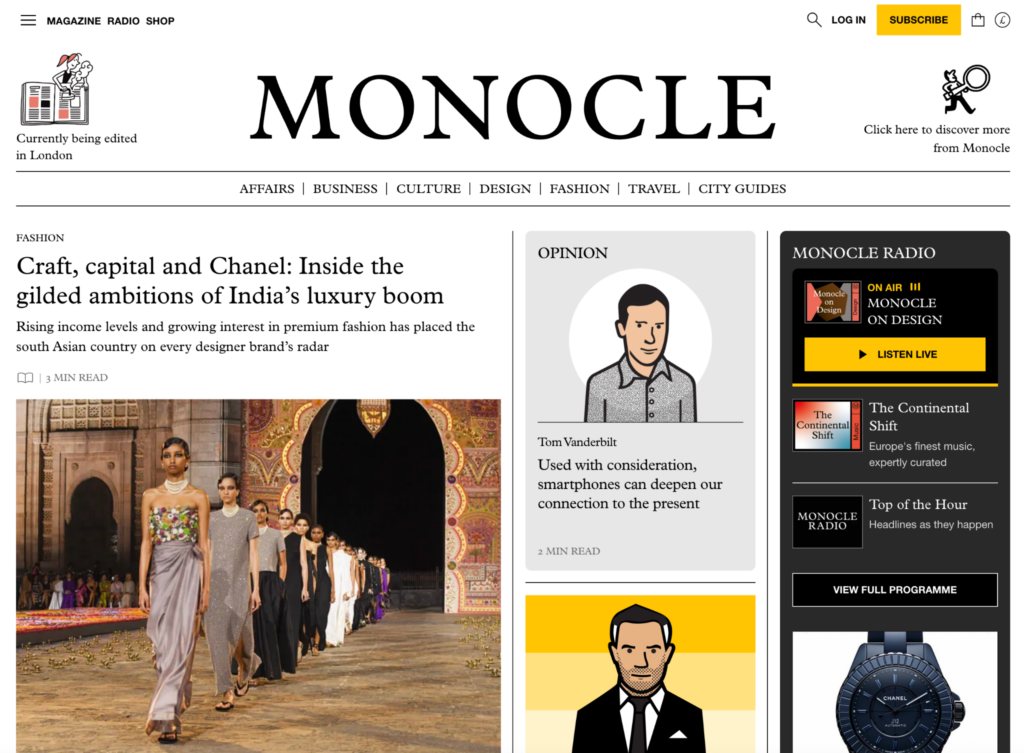
Image credit: Monocle website
Train your ear by studying:
- How they structure paragraphs
- What they leave out
- The rhythm of how their sentences flow
- Their use of silence, breath, and restraint
If you’re writing for luxury, your copy should read more like editorial than ecommerce.
5. Pair voice with design from the start
A cutting-edge layout with lifeless copy? Flat. Beautiful prose in a dated layout? Same story.
Your words and your visuals shouldn’t just “go together.” They should feel like they were born from the same concept.
That means copy should be involved during the design process, not tacked on afterwards, and vice versa.
ROOBAA’s website is a great example here; it’s a perfect pairing of sharp photography and confident copy. It feels like one creative mind, not multiple departments.
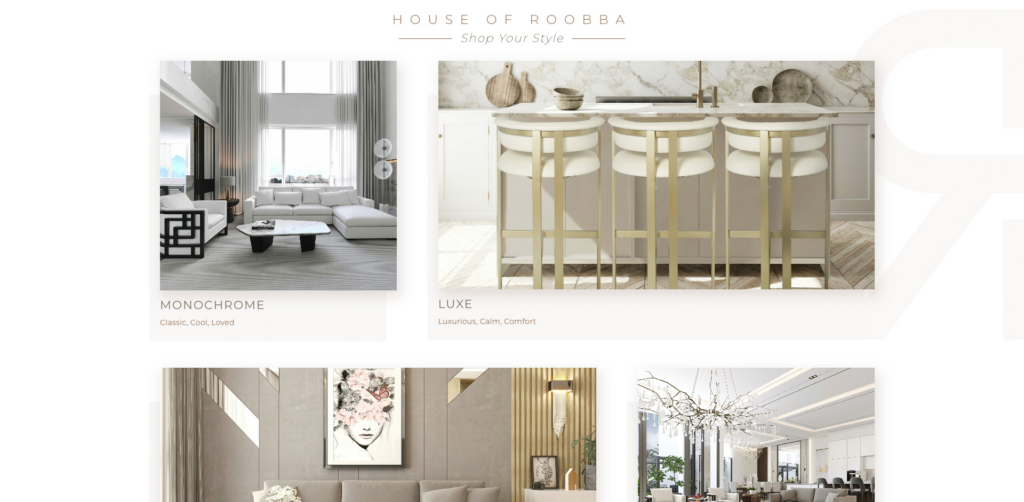
Image credit: Roobba
A high-end layout with safe, over-written messaging? You’ve lost the tone. The same goes the other way around.
6. Test in private, not in public
Luxury brands don’t rush, especially when it comes to language. Test voice in internal creative sessions, build mini campaigns, and rewrite key pieces of your site. Try two or three distinct tonal routes and sit with them. See which one feels most like your brand.
Avoid launching a “half-finished” voice publicly just to meet a content deadline. The damage to perception isn’t worth it.
7. Don’t Confuse Silence with Absence
One more thing: not everything needs copy. And when you’re working in luxury, what you don’t say can often carry more weight than what you do.
A carefully placed tagline, one sharp sentence, or even a well-structured pause can elevate a campaign beyond words.
Look at Chanel’s product campaigns. Sparse. Minimal. And somehow… iconic. They use space as a strategic asset. Your brand voice should know how to do the same.
Luxury Brand Voice Examples: Who’s Doing It Right?
By now, I’m sure you’re ready to see some luxury brand voices in action! These brands each speak in their own unmistakable tone: refined, intentional, and completely aligned with who they are. This isn’t about copying their style. It’s about understanding how voice becomes a strategic asset in luxury branding.
Chanel
“The Ultimate in Luxury”
Image credit: Chanel website
Chanel doesn’t try to explain itself. The brand speaks with elegant restraint. You can expect short sentences, timeless language, and just enough mystique to keep you leaning in. Whether it’s a campaign tagline or a product description, Chanel’s voice is consistent: bold but never loud. It’s not trying to be your friend. It’s inviting you into its world if you belong there.
RIMOWA
“Engineered for life”
RIMOWA’s voice speaks to travellers who see luggage as identity. Their tone is grounded in precision and clarity, almost architectural in style. Yet it still manages to convey emotion and heritage. The balance of utility and aspiration in their messaging is a strong example of high-end positioning done right.
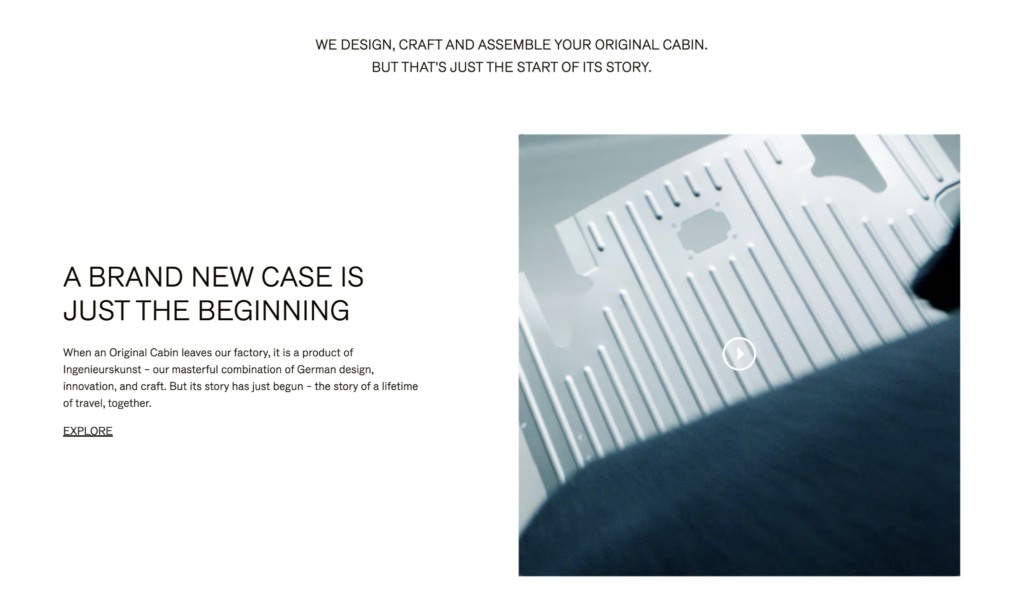
Image Credit: RIMOWA website
Burberry
“The Freedom of Our Imagination”
Burberry’s voice has evolved dramatically in the last decade. While it still nods to its British heritage, today it leans into youth culture, modernity, and global luxury. The tone is sharper now, less traditional, and more energetic, without losing its polish. It’s a perfect example of a heritage brand that’s modernised its voice without losing its roots.
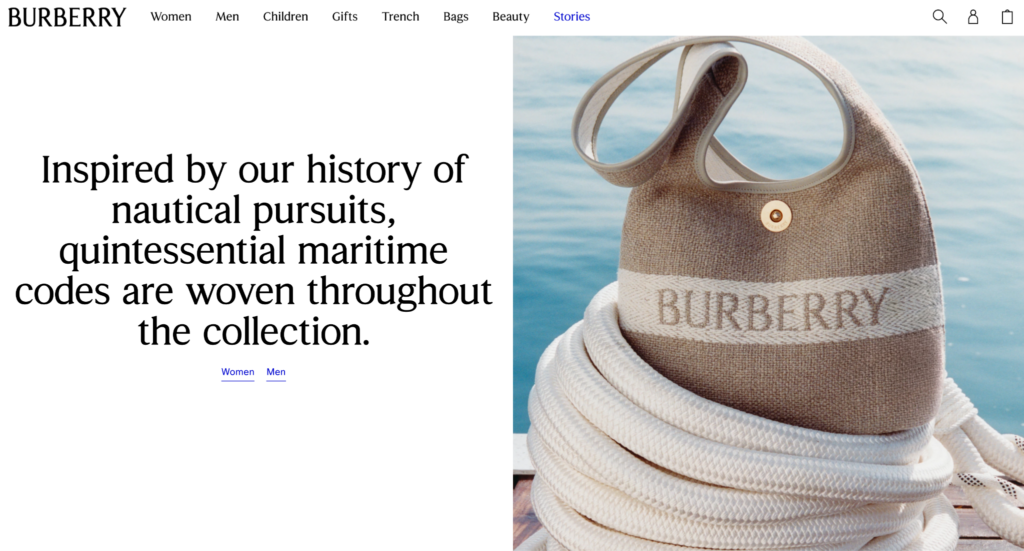
Image Credit: Burberry website
The Future of Luxe Branding: Luxury Consumer Trends 2025
Luxury has always been about staying ahead of the culture. And in 2025, the brands that win won’t just have the best product or heritage. They’ll have the clearest voice in the room.
1. The rise of “quiet luxury” communication
Subtlety is the new power move. In a world oversaturated with content, the luxury voice is moving toward restraint. Fewer words. More weight. Messaging that doesn’t sell, but signals. Think elegant understatement over performative storytelling.
2. Personalisation without dilution
Luxury customers want to feel seen, but they don’t want you to lose your identity trying to please them. Brands will need to balance tailored messaging with a voice that remains true to its core. Think one-to-one relevance, without compromising your brand’s tone or prestige.
3. Luxury language needs to travel well
Luxury is more global than ever. As brands expand into new markets, voice needs to travel well, adapting without losing its DNA. Cultural sensitivity and linguistic finesse will be critical, especially when speaking to Gen Z and Millennial luxury buyers worldwide.
4. AI will raise the bar, not lower it
As AI-generated content floods feeds, human tone becomes the ultimate differentiator. Luxury brands will double down on crafted copy because audiences can spot formulaic writing from a mile away. The voice that feels human, intelligent, and intentional? That’s what cuts through!
5. Sustainability will need a smarter voice
The conversation around sustainability in luxury is evolving. It’s no longer about bold claims; it’s about measured, meaningful communication. Brands will need to speak on values with clarity and humility, not just marketing polish.
Luxury Branding Needs More Than Good Taste
A flawless product, impeccable visuals, a curated Instagram grid… they’re all essential. But without a clear, confident voice behind it all, your brand is missing its presence.
In 2025, your audience is listening to the way you introduce yourself, how you respond, and the feeling behind every phrase. And in the luxury space, how you speak says as much as what you sell.
If your tone feels inconsistent, vague, or too safe, it’s not protecting your positioning; it’s weakening it. This is where voice becomes strategic. And where partnering with experts can make all the difference.
At Appnova, we don’t do generic. We help luxury brands craft voices that feel as refined and distinct as their visual identity. Whether you’re building from the ground up or evolving a legacy brand, we work with you to define your tone, sharpen your message, and bring clarity to every word your brand speaks.
If you’re ready to create a voice that’s unmistakably yours, contact Appnova, your trusted luxury branding agency, today.
Subscribe To Us
Our Services
Categories
Subscribe To Us
Contributors
Categories

This website uses cookies so that we can provide you with the best user experience possible. Cookie information is stored in your browser and performs functions such as recognising you when you return to our website and helping our team to understand which sections of the website you find most interesting and useful. Third party cookies such as Google Analytics is also used on this site to provide analytics in order to better understand the user engagement on our site.
You can adjust all of your cookie settings by navigating the tabs on the left hand side.
Strictly Necessary Cookie should be enabled at all times so that we can save your preferences for cookie settings.
If you disable this cookie, we will not be able to save your preferences. This means that every time you visit this website you will need to enable or disable cookies again.
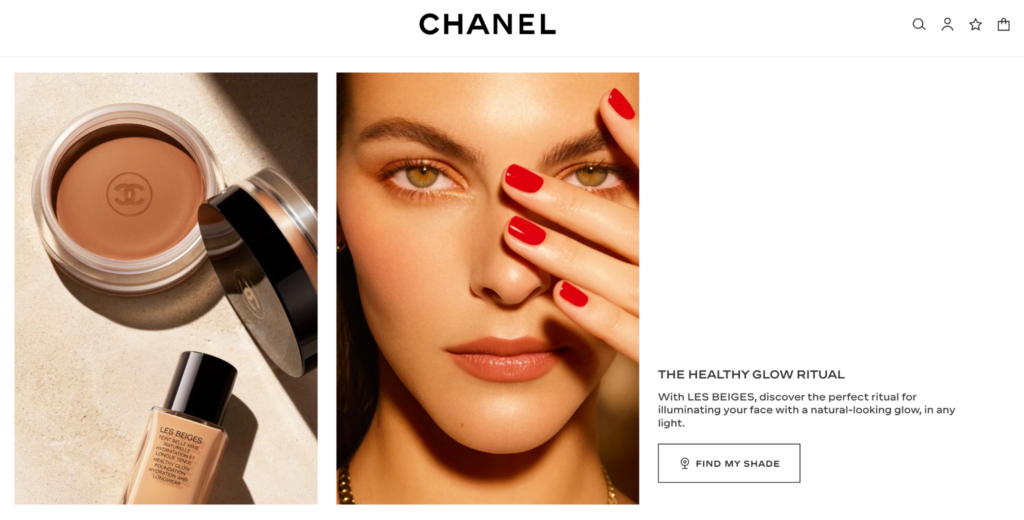







0.Comments